10 Top Customer Retention Software to Boost Loyalty and Reduce Churn

Table of contents
Its a proven fact that retaining your existing customers is much cheaper than acquiring new ones. In fact, new customer acquisition is 5 times more expensive due to all the costs incurred due to marketing, advertising, and sales efforts.
On the other hand, focusing on customer retention strategies can save you as much as up to $35 billion a year!
Now, retention involves proactively engaging customers, identifying users who are at the risk of churn, and careful planning to re-engage these accounts. A good way to boost these efforts is to use customer retention software. These solutions offer some nifty features that can help you target and refine your retention strategies at scale.
In this blog, we discuss 10 customer retention tools to consider in order to reduce churn and improve user engagement.
Table of Contents
- What is Customer Retention Software?
- Types of Customer Retention Tools
- 10 Customer Retention Tools to Consider in 2025
- Choosing the Right Customer Retention Software for Your Business
What is Customer Retention Software?
A customer retention solution is a tool that is designed to help businesses manage existing customers and keep them engaged to reduce churn rates. These tools offer robust features that can be used to carefully monitor customer behavior, identify those at risk for churn, and proactively address issues that may potentially lead to user attrition.
Retention tools enable sales, marketing, and customer success teams to offer personalized customer experiences, foster loyalty, and build long-term relationships.
Types of Customer Retention Tools
Customer retention tools typically include a broad category of solutions to manage different aspects of your retention strategy. Here are some of the most common types of customer retention solutions.
- Customer support tools: Enable personalized customer service across multiple channels using customer support software. These tools help in streamlining user interactions and increasing customer satisfaction, broadly contributing to your retention efforts.
- Loyalty and rewards platforms: These tools are used to encourage repeat purchases from customers by incentivizing them using rewards, discounts, or points. The goal is to keep customers coming back and increase their lifetime value.
- Churn prediction and analytics tools: Such tools leverage predictive analytics to analyze customer behavior and predict accounts that are highly likely to churn. They provide actionable insights that can be used to take proactive measures to address concerns and retain at-risk users.
- Customer success platforms: They are designed to help customers unlock the most value out of a product. Customer success solutions help drive user adoption, track product usage, and capture customer feedback.
10 Customer Retention Tools to Consider in 2025
If you’re on the lookout for a retention tool to add to amp up your customer engagement strategy, here are 10 tools you should consider.
1. Hiver
Hiver is a powerful multichannel customer support platform that operates seamlessly out of your email inbox. The biggest advantage with Hiver is that it is super easy to set up and teams can get started with using it literally in minutes.

The platform’s robust email management features and automation enable your customer service teams to offer personalized support and tackle user queries in a systematic manner. This improves response times which directly contributes to better customer satisfaction.

Key features:
- Email management: Convert incoming customer emails into tickets and assign them to the appropriate agents to ensure that nothing falls through the cracks. View the status of every email and see whether they are ‘Open’, ‘Closed’, or ‘Pending’ so that you can track the progress of customer queries and ensure critical issues are resolved on time.
- Collaboration: Complex queries require input from multiple team members or departments. Enable your teams to work collaboratively using Hiver’s Notes. It’s a nifty little feature that opens up right alongside every email. Use @mentions to loop in a team member whenever you need their insights. This removes team silos and helps your support agents to leverage their team’s expertise to resolve queries faster.
- Automation: Take the manual work out and enable support agents to work more efficiently. Automate tasks like email assignment by defining conditions so that incoming queries are assigned to agents based on their skills or workload. This ensures queries are handled by expert agents resulting in accurate and effective query resolution which contributes to a better customer experience.
- SLAs: Ensure customers receive timely resolutions for their complaints. Set SLAs for email queries and add reminders so that every query receives a response within a designated time frame. For instance, all incoming queries should receive the first response within two hours. You can define conditions such that whenever an SLA is not being met, an ‘SLA Violation’ tag is attached to the email and escalated to relevant stakeholders.
- Knowledge base:Empower customers to self-serve by giving them the resources they need to resolve their queries. Hiver’s knowledge base allows you to create detailed help articles, how-to-guides, and tutorials that can help users solve simple, repetitive queries. This way your support agents can focus on handling complex customer requests.
💡Spotlight feature
I especially love using Hiver’s analytics to make data-driven decisions and identify areas of improvement. You can either use pre-built reporting options or create custom reports to measure what matters to you. For instance, I created a workload dashboard to get a bird’s eye view into the number of active conversations being handled by my support team and to track the average response time for these interactions. This helped me track the performance of my support team and see how efficient and responsive they are in handling customer queries.
2. Zoho Desk
Zoho Desk is a comprehensive CRM software that can be used to boost your retention efforts. The most attractive feature of Zoho Desk is its affordable pricing. The Zoho Desk Express plan in particular, can be availed at just $7 per agent per month, and is ideal for individuals and small teams looking to kickstart their customer service function.
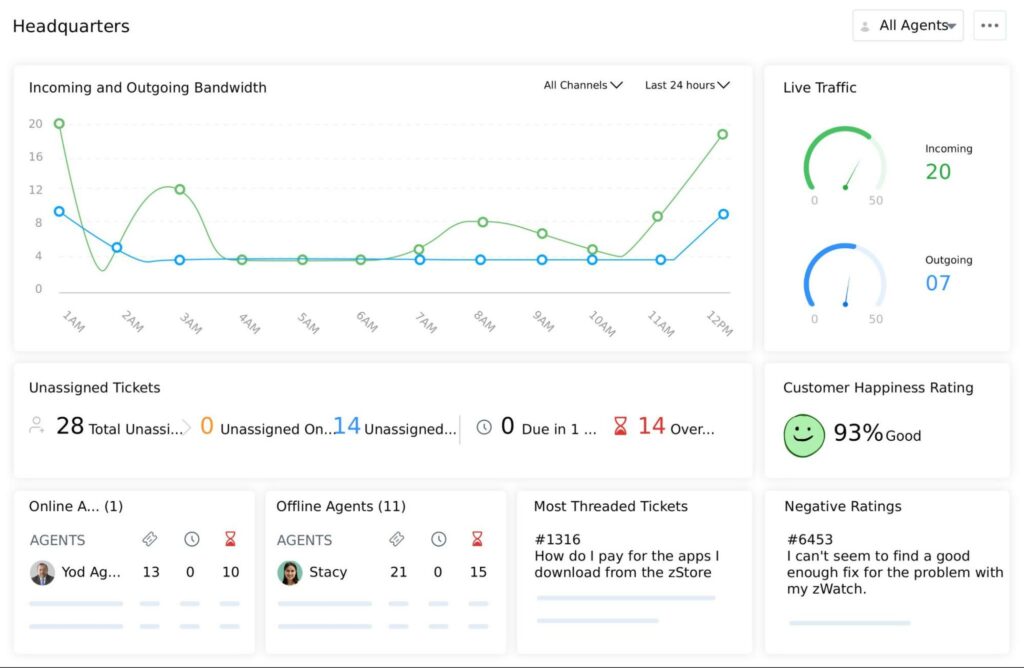
The platform has features like journey orchestration, omnichannel support, customer segmentation, and contact management that can help you keep your customers engaged.

Key features:
- Contact management: Use Zoho CRM’s centralized contact database to keep a detailed record of customer information, interactions, and preferences. This 360 degree view of customer data is useful for offering personalized experiences and more importantly, to identify fluctuations in customer behavior, and respond more effectively to their needs.
- Zia: Zoho Desk’s AI- Zia is a powerful tool to streamline your customer support. The AI algorithm can analyze a query to identify customer sentiment. This helps agents tailor their approach to match the customer’s tone and deal with dissatisfied users more effectively. This is an important step in preventing customer churn.
- Churn prediction: Prevent customer churn by getting real-time predictions about your users using Zia’s AI capabilities. It analyzes the frequency of customer transactions with your product to predict the probability of churn and provide you with the data you need to address it.
- Journey builder: This is a drag-and-drop functionality that allows you to define end-to-end customer journeys. You can create automated responses for multiple touchpoints, user actions, and scenarios that are likely to occur as a customer interacts with your product or service.
💡 Spotlight feature
I tried out the Cohort Analysis feature and was really impressed at how it helped me understand trends in customer behavior. You can use this feature to segment users into groups based on when they signed up for your product and track their behavior over time. For instance, say you want to track how many users who signed up for a trial in January made a purchase in February. Similarly, you can also track how many months it took for trial users to become paying customers. These insights can help you understand if your campaigns were successful in attracting long-term users and decide whether or not you want to continue your campaign or make adjustments to it.
3. Churnly
This is an AI-powered platform that can help you predict churn at various stages of the customer journey. The biggest advantage is that it can help you identify the potential reason for churn and take proactive measures to prevent it.
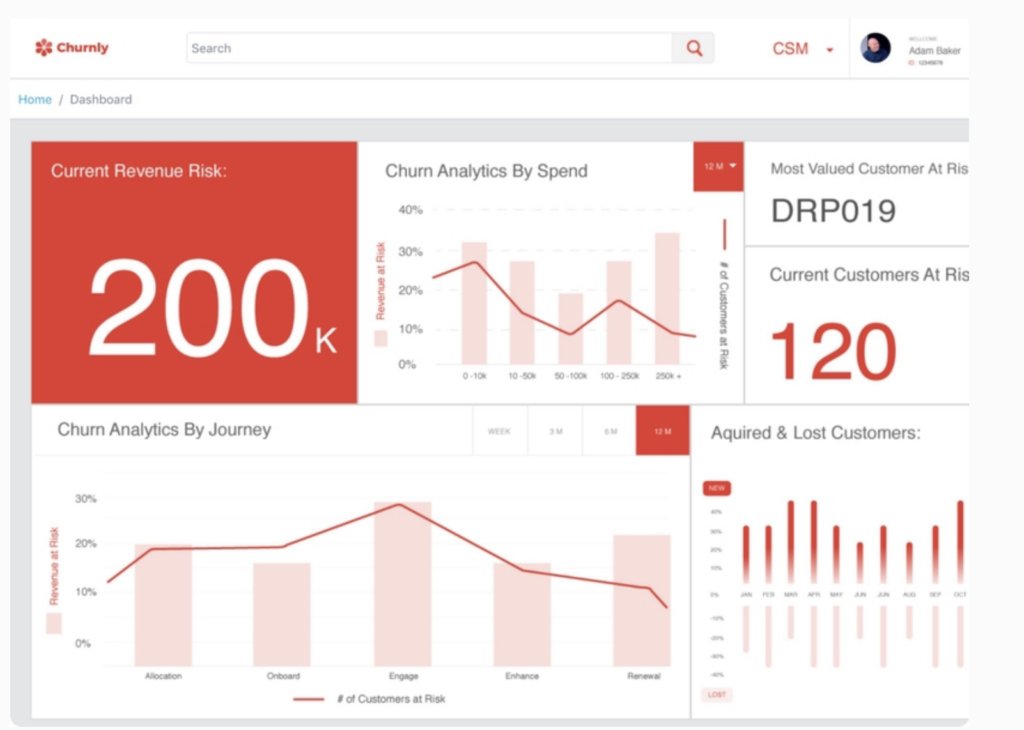
You can get fully visibility into metrics related product adoption, user engagement, and renewal. Aside from this, you’ll also get granular insights into how customers interact with different features of your product and build a data-driven customer success strategy.
Key features:
- Predictive analytics: Use AI-powered analytics to gather customer data at every stage of the user journey. Identify usage patterns to detect anomalies in customer behavior and determine why a user may drop off.
- Customer journey tracking: Get a 360 degree view of the customer journey and track engagement, product adoption, and user satisfaction across multiple stages. These insights can help you figure out the stages where customers are likely to disengage.
- Revenue at risk tracking: Predict customers who are at high risk of churn and calculate the potential loss in revenue from these accounts. This way you can take preventive measures to save such customer accounts.
💡Spotlight
What stood out to me was the custom APIs that allows you to connect unique data from systems like CRMs, billing tools, or customer support tools to Churnly. This is super useful when you want to improve churn predictions.
4. ChurnZero
ChurnZero is a customer success software that offers features like in-app communication, automation, and AI to help you retain your customers and prevent churn.
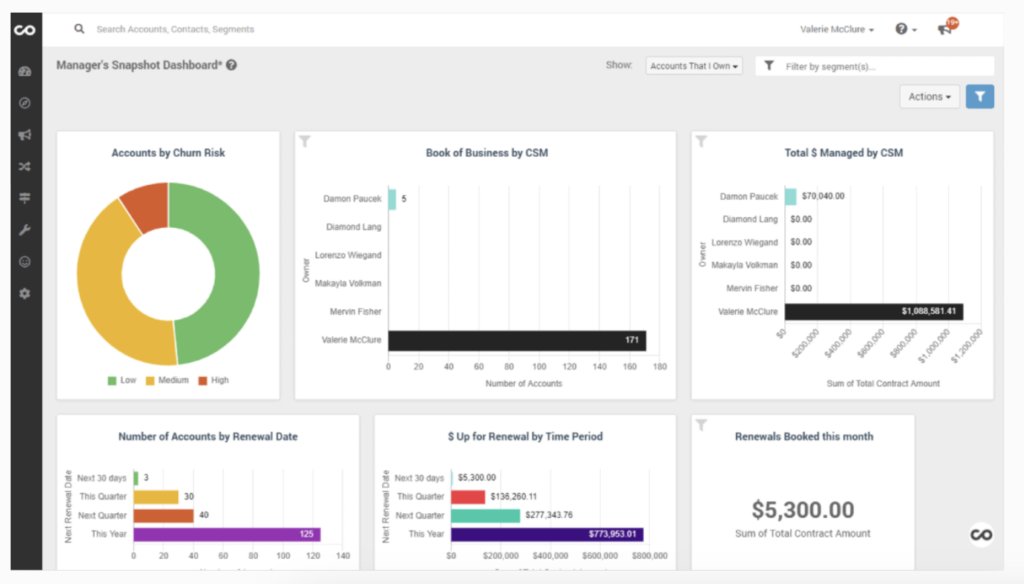
You can even streamline your customer onboarding process, set timelines for onboarding tasks, and track how a new customer is progressing. Automations help you take care of manual, repetitive tasks and help your customer success teams focus on tasks that actually matter.

Key features:
- Customer success AI: This feature helps you analyze your customer data to uncover patterns related to your customer relationships. It generates detailed summaries of account histories, customer health scores, feedback, and engagement to help you create personalized emails and in-app messages suited to the customer’s specific needs.
- ChurnScores: Monitor the health of your customer accounts to track how likely a user is likely to churn or renew their contract with you. Track metrics like engagement level, behavior, risks, and concerns so you can proactively address problems, strengthen relationships, and offer timely support.
- In-app communications: Enable customers to engage with your product better by delivering targeted messages from within the application. This is especially useful when you’re dealing with customers who are resistant to new software and helps them reach time-to-first value much faster.
💡Spotlight feature
Businesses may find the renewal forecasting feature valuable in managing account growth. It combines real-time analytics and customer health scores to forecast growth opportunities and drive revenue with ease. If you are a customer success manager, you can use the pre-built features in ChurnZero to identify accounts that are up for renewal and which ones offer opportunities for expansions and upsells.
5. CustomerGauge
If you’re looking for a customer feedback and experience management platform to amplify your retention efforts – CustomerGauge is a good option to consider.
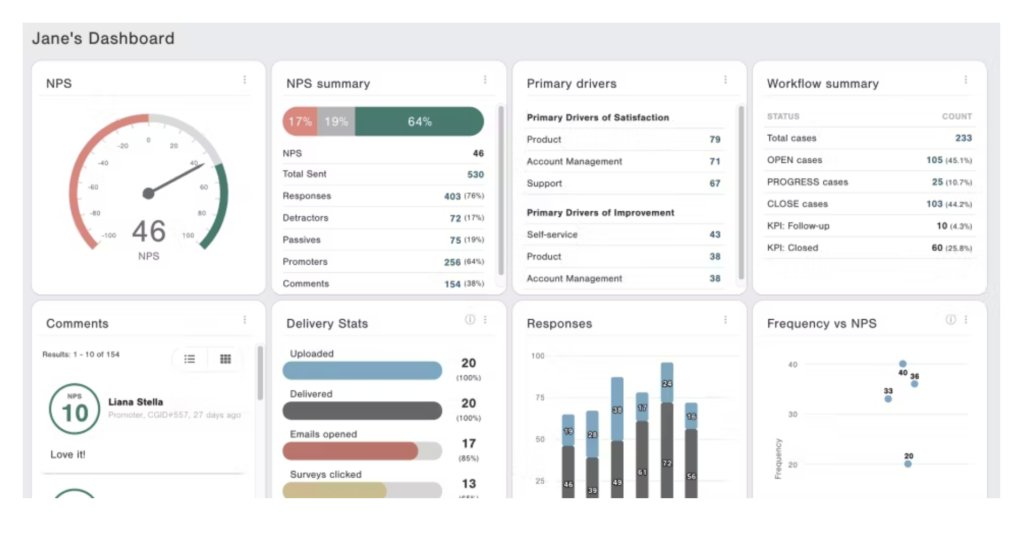
CustomerGauge allows you to automate the process of capturing customer feedback across multiple channels. The platform’s powerful text and sentiment analysis features are useful in identifying emotions and trends in customer feedback.
Key features:
- Survey builder: Create customizable survey campaigns to collect customer feedback and gather actionable insights about product performance, user satisfaction, and service quality. Use these insights to make data-driven decisions and drive continuous improvements in your offerings.
- Driver and revenue analysis: Identify the factors that influence customer loyalty and churn. Link these directly to revenue impact so you can pick the best strategies to maximize customer retention.
- Account-level drill down: Do an in-depth analysis of your customer accounts to study engagement and revenue potential. Track health metrics that matter to you, identify customer needs, and tailor your interaction for each account for the best ROI.
💡Spotlight feature
I think the customer lifecycle report is especially useful for getting a comprehensive view of a customer’s journey, from onboarding to renewal or churn. You can track key touch points, monitor engagement, and assess customer health at various stage. Studying these metrics allows you to intervene at the right time to improve retention. For instance, you can use the report to identify customers that exhibit the early signs of churn, such as the ones that show low engagement after onboarding. By spotting this trend, you can proactively reach out with targeted support or incentives to improve their experience and increase retention
6. Gainsight
Gainsight is another popular product experience and customer success software used by several large businesses and enterprises.
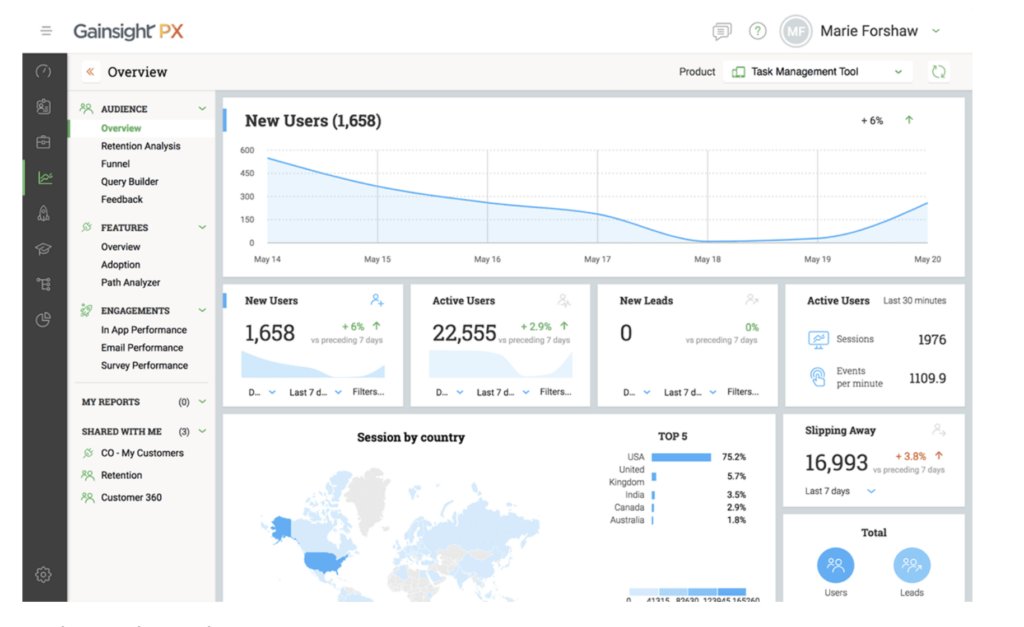
The platform gives you real-time AI powered insights from customer conversations so you can drive retention and identify risk factors before they escalate. It has a user-friendly interface and advanced analytics and reporting which makes interpreting complex customer data a breeze.

Key features:
- Customer health scores: Calculate your customer account health scores based on factors like usage, feedback, and support activity. Identify which accounts are highly likely to churn so that you can reach out to them before it happens.
- Journey orchestration: Map every stage of the customer journey and make sure the right actions are taken at key stages of the lifecycle to prevent dropoffs o.
- 360-Degree customer view: Provides a comprehensive view of all customer interactions, data, and engagement across departments.
- Churn and retention insights: Delivers actionable insights into customer behavior and helps predict churn risks.
💡Spotlight feature
Gainsight allows you to create detailed, actionable plans to demonstrate the progress you’ve made toward achieving your customers’ goals. You can capture and track specific activities related to these goals, ensuring everyone stays aligned on the progress. Gainsight also offers AI playbooks and best practices to help you and your team figure out the best actions to take in response to customer risks and opportunities, driving better growth and account management.
7. YotPo
This is a customer loyalty and referrals platform designed to help ecommerce businesses retain customers and encourage repeat purchases.
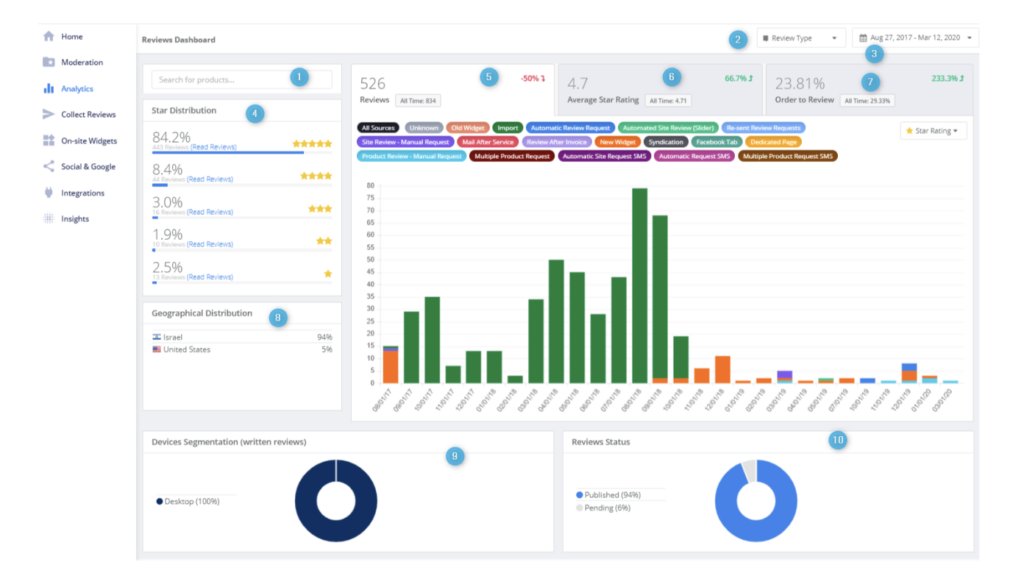
YotPo can be used to engage customers via SMS and email and create personalized experiences that boost the CLTV. The aim is to create seamless post-purchase journeys specifically tailored to each customer to drive retention.
Key features:
- Loyalty and referrals: Create customized loyalty and referral programs to encourage customers to make repeat purchases and incentivize engagement. This is a good way to foster long-term relationships and grow your customer base.
- Email: Use personalized, high-converting emails to boost your marketing efforts. Set up smart email campaigns based on customer interactions and get comprehensive insights into CTR, month-on-month growth, and other key metrics.
- SMS: Brands can create tailored SMS campaigns that speak directly to individual customer segments, offering relevant promotions, reminders, and updates. This level of personalization increases engagement and improves conversion rates.
💡Spotlight feature
Yotpo’s Smart Displays feature allows brands to automatically showcase user-generated content (UGC) in customizable, visually appealing formats on their website, such as photo galleries, review carousels, or testimonials. These dynamic displays encourage purchases by providing social proof directly where shoppers make decisions.
8. Totango
Totango is a customer success platform designed to help businesses manage and optimize customer relationships to drive retention and growth.
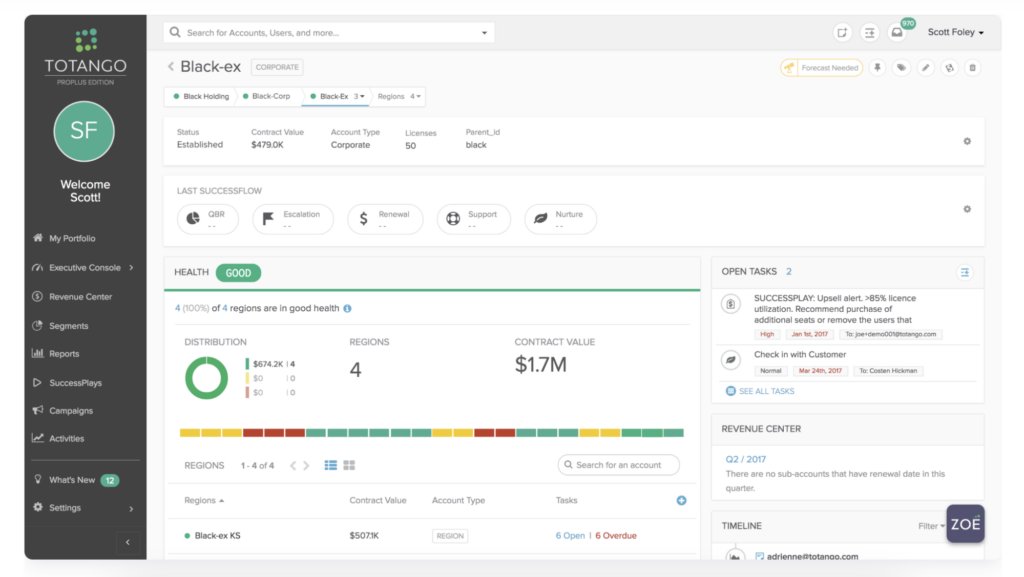
The platform offers various features that can help you identify at-risk customers, automate repetitive tasks, and deliver precise, targeted messages.

Key features:
- SuccessBLOCs: Use pre-built and customizable modules and templates embedded with best practices that focus on specific aspects of customer success, such as onboarding, adoption, or renewals. They include goals, metrics, and workflows to help customers achieve their goals faster and drive business growth.
- Customer Segmentation: Enables segmentation of customers based on behavior, product usage, or engagement levels to deliver more personalized and targeted actions.
- Renewal and Churn Management: Provides insights into customers’ likelihood to renew or churn, allowing customer success teams to take proactive measures.
💡Spotlight feature
I did specifically like the automated workflows simply because you can automate actions based on aspects like customer behavior, milestones, or health scores. These workflows trigger tasks, emails, or alerts to ensure timely interventions, improving customer success without manual effort. For instance, you can use Totango’s automated workflows to send onboarding emails to new customers. If a customer doesn’t engage with the product within the first week, the system automatically triggers a follow-up email offering support or a demo. This ensures customers are properly onboarded, reducing the risk of churn early in the relationship.
9. Custify
Designed specifically for SaaS businesses, Cusity focuses on helping businesses reduce churn, increase the customer lifetime value, and drive growth through improved customer engagement.
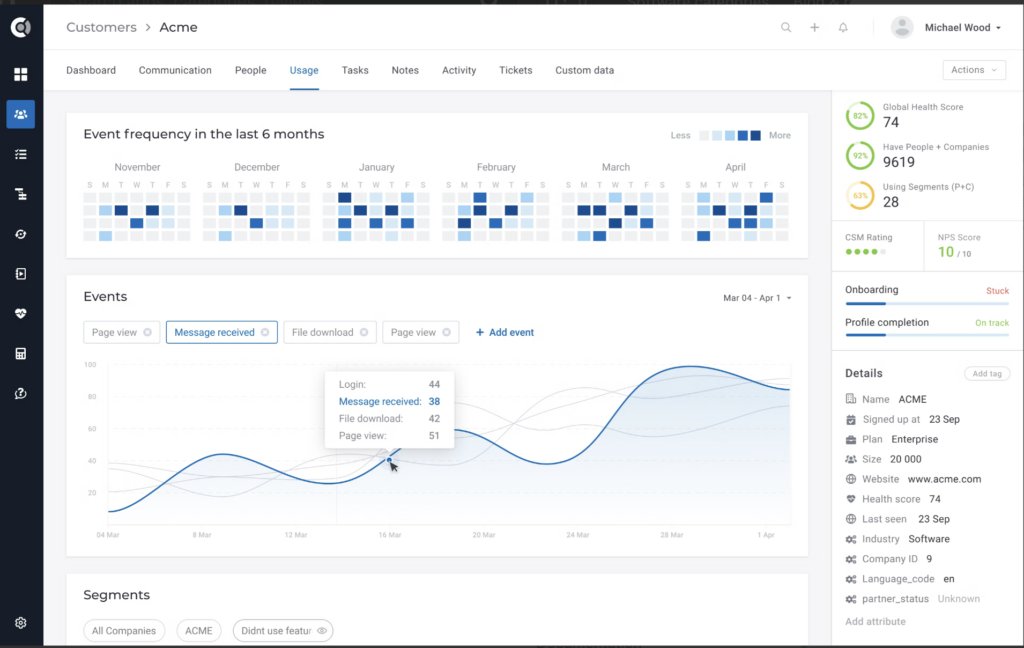
You can use the platform to a holistic view of each customer, including usage data, communication history, and key account metrics, helping customer success teams understand customer needs and take proactive action.
Key features:
- Customer Health Scoring: Custify tracks customer behavior, usage, and engagement to calculate health scores, helping businesses identify at-risk customers or those ready for upselling.
- Task Automation: Automates routine tasks, such as sending emails, creating alerts, and follow-ups based on customer activity or lifecycle stage, freeing up time for customer success teams.
- Revenue and Churn Insights: Provides insights into customers’ revenue contribution and churn risk, helping businesses prioritize actions to retain high-value customers.
- NPS and Feedback: Enables collection and tracking of customer feedback, including NPS surveys, to improve service and measure satisfaction.
💡Spotlight feature
Custify’s Playbooks are predefined, customizable workflows that guide customer success teams through specific processes like onboarding, renewals, or upselling. These playbooks help ensure consistency and efficiency in handling customer interactions by automating tasks and setting clear steps for each stage. For example, during onboarding, a SaaS company uses a playbook that automatically triggers a series of tasks: sending a welcome email, scheduling a demo, and checking in after the first week of product usage. This ensures every new customer receives consistent attention and support, improving the onboarding experience and reducing churn.
10. ClientSuccess
ClientSuccess is a dedicated Customer Success Management (CSM) software designed to help businesses effectively manage their client relationships.
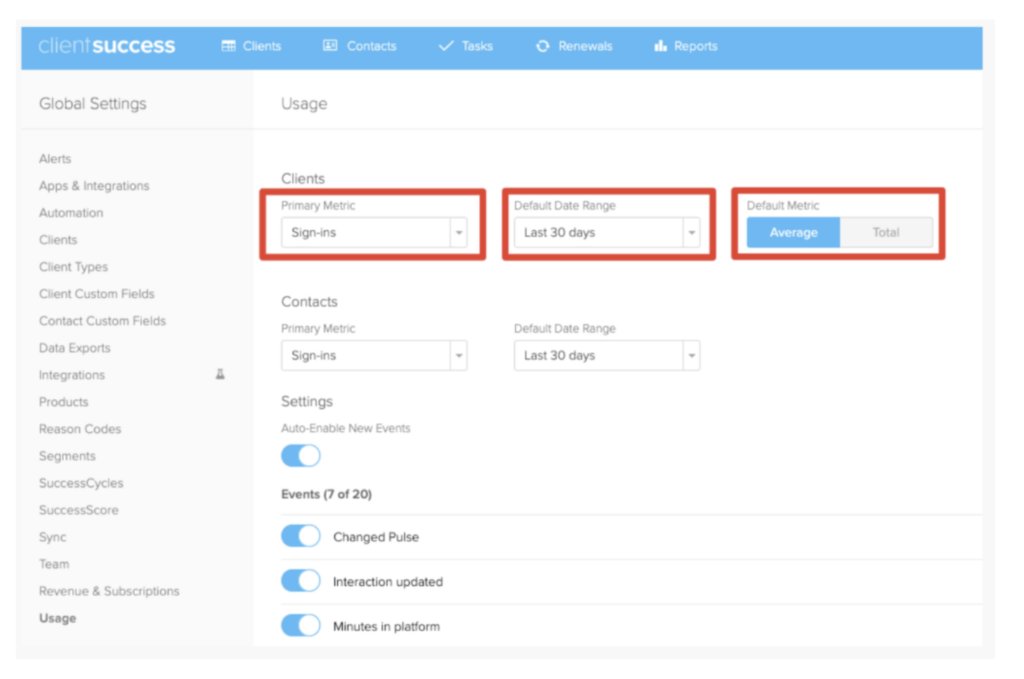
It provides tools to track customer engagement, manage renewals, and improve customer satisfaction. You can also enable customer success teams to manage customer lifecycle stages, from onboarding to renewal, using customizable workflows and checklists.
Key features:
- Customer 360 View: Provides a complete view of each customer, including key metrics, historical interactions, and engagement data, allowing teams to personalize interactions.
- Automated Alerts & Tasks: Automates the creation of tasks and alerts based on customer health scores, contract timelines, and engagement levels, helping teams take proactive action.
- NPS & Surveys: Allows teams to collect feedback from customers using NPS surveys and other feedback tools to measure customer satisfaction and identify improvement areas.
- Renewal Management: Helps manage contract renewals with automated reminders, tasks, and alerts to ensure that renewals are handled efficiently and on time.
💡Spotlight feature
ClientSuccess’s Churn and Upsell Insights feature helps customer success teams identify which customers are at risk of churning and which ones have opportunities for upselling. By analyzing customer health scores, engagement, and usage data, the platform provides actionable insights to focus on retaining valuable customers and growing revenue through upsell opportunities. For instnce, your SaaS company can use Churn Insights to identify customers with declining engagement. The platform flags these customers as high risk, prompting the customer success team to reach out, offer personalized support, and potentially prevent churn. Simultaneously, Upsell Insights identify power users, allowing the team to promote advanced features or higher-tier plans for additional revenue growth.
Choosing the Right Customer Retention Software for Your Business
Customer retention software plays a crucial role in helping businesses reduce churn, increase customer loyalty, and drive long-term growth. But with the number of options available, choosing one that fits your business needs can be challenging.
We’d recommend you to look for the following in your customer retention software:
- Customer segmentation and lifecycle management
- Renewal and upsell features
- 360 degree customer view
- Comprehensive third party integrations
- Scalability
- User-friendly interface
Most of the tools I’ve mentioned above come with free trials. Maximize the use of these trials to understand how different platforms fit into your business needs. In fact, you can start by signing up for Hiver’s free trial to learn how to boost your customer retention efforts.

































